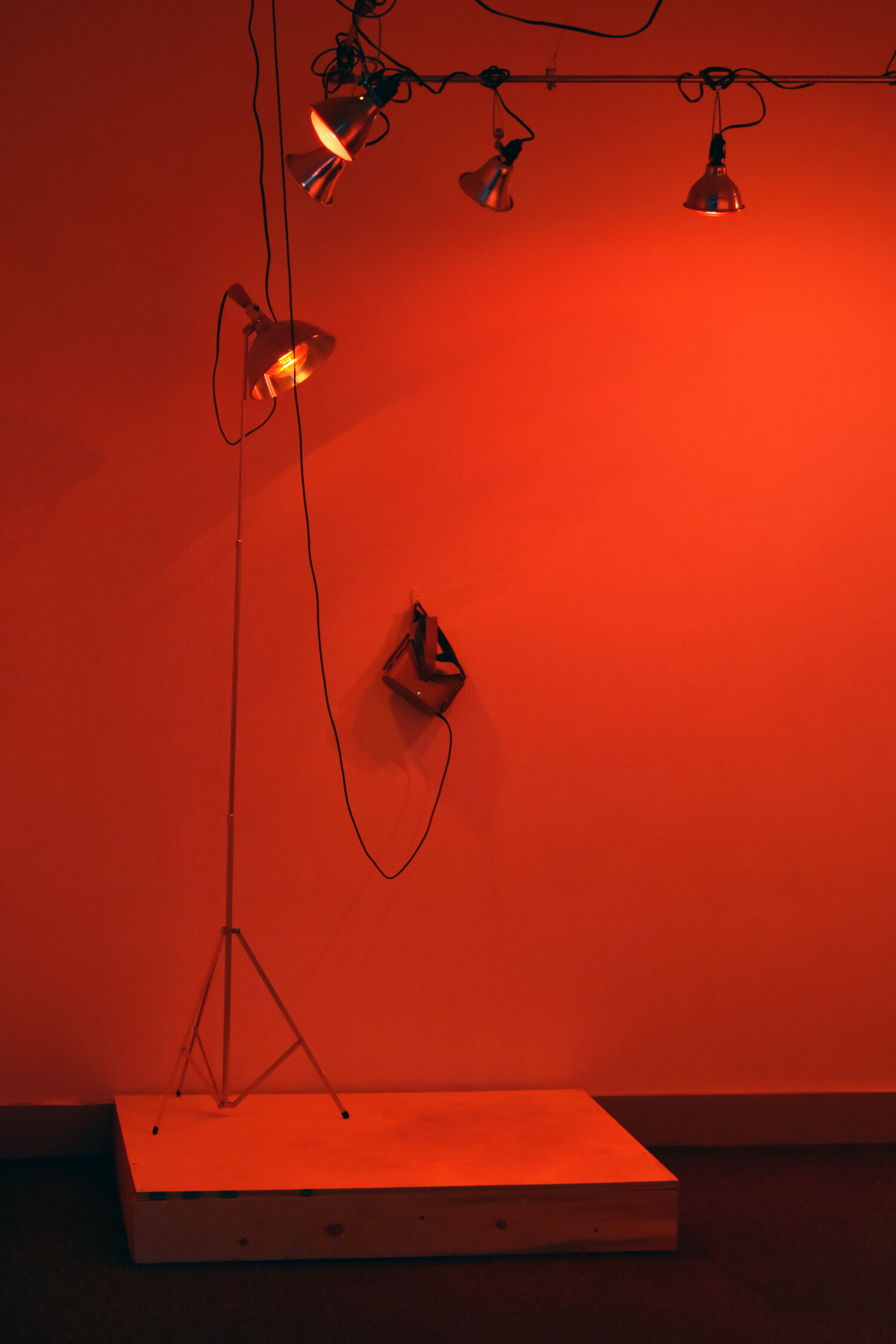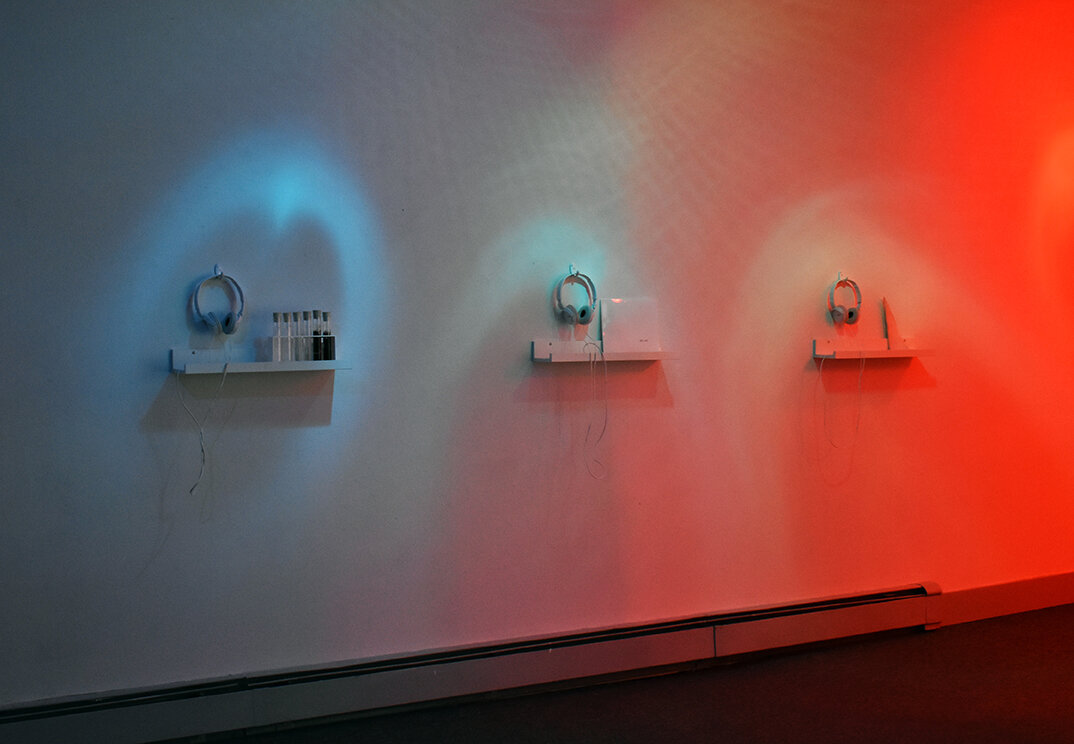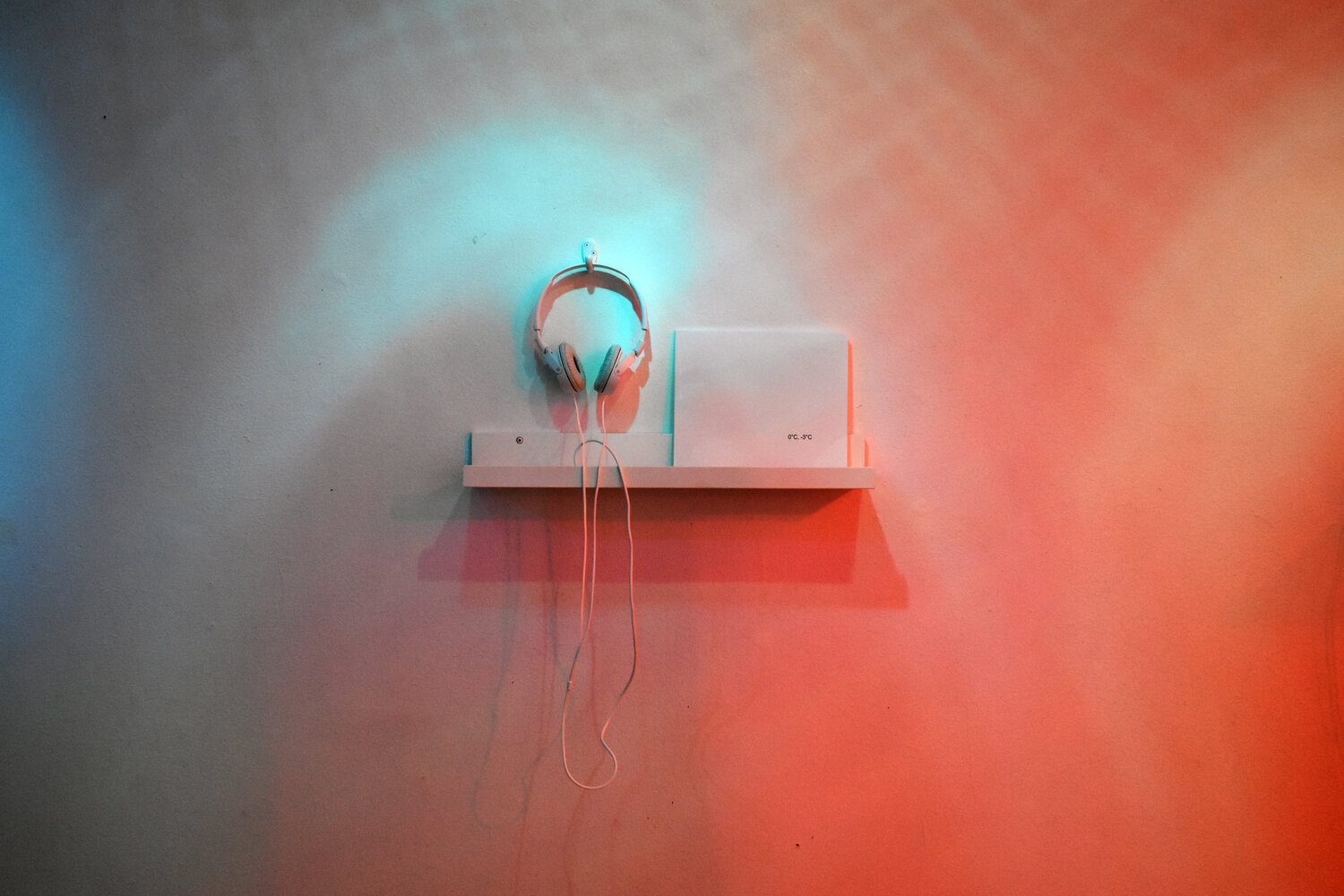
In 0°C, -3°C, collaborative artists, Emily Dzieweczynski and Betsy Ruth Byers encourage viewers to intimately experience the effects of climate change on the Rhône glacier through a mixed media installation that includes Virtual Reality animations, olfactory artwork and sensory stimuli throughout the gallery.








Olfactory. Auditory. Tactile.
To create a holistic sensory experience, the team studies both the sensory qualia of the glacier, such as the auditory, olfactory, and visual characteristics, and our neurobiological processing of the stimuli, how our brain understands the information coming in through our sensory pathways. The resulting artwork asks the audience to interact with glacial ice through sound, smell and touch. Felt, water, blue light and heat lamps are a few of the primary materials employed as a means of manifesting the encroaching warmth on the cold environment.
In conjunction with this exhibition, Byers and Dzieweczynski hosted additional programming to engage the audience in discussion of the environment. Postdoctoral Research Scientist and Glacial Microbiologist, Alex Michaud, gave a presentation before the opening reception at 6pm on Friday April 26th. Originally from Minnesota, Michaud has since traveled to the Earths' poles studying and learning from glaciers and will be sharing this research and experience. On Monday April 29th at 7 - 8:30pm, Alexander Theship-Rosales previewed his documentary To Walk Alongside: Awakening Ecological Spirituality, which examines the relationship between spirituality and the environment.
Virtual 360 Animations.
In addition to the sensory installation, the team has developed two virtual reality experiences, one to record and visualize the current data documenting the loss of the Rhône glacier and another to immerse the viewer in the visceral sensation of melting within the glacier.